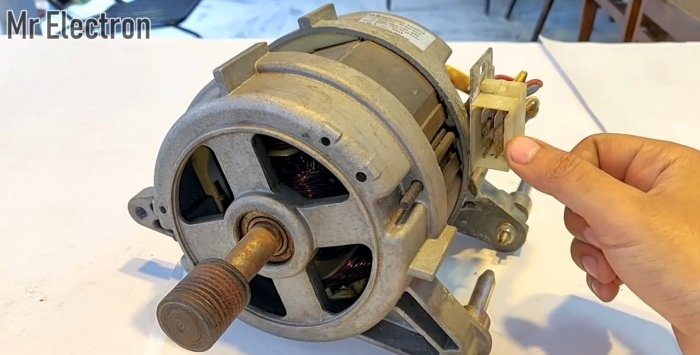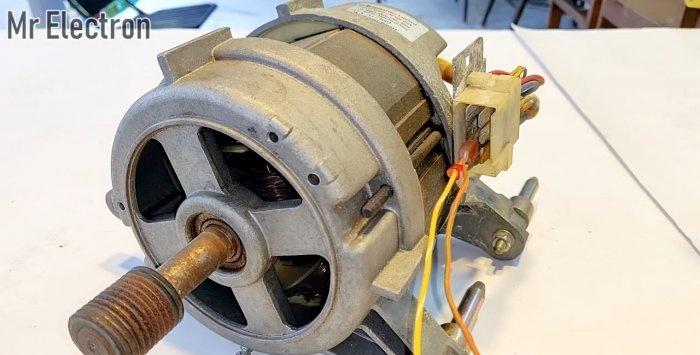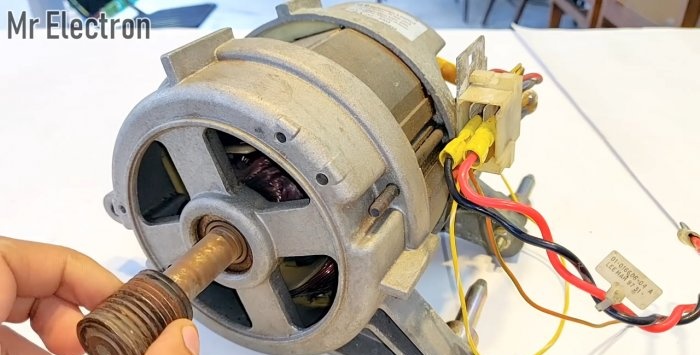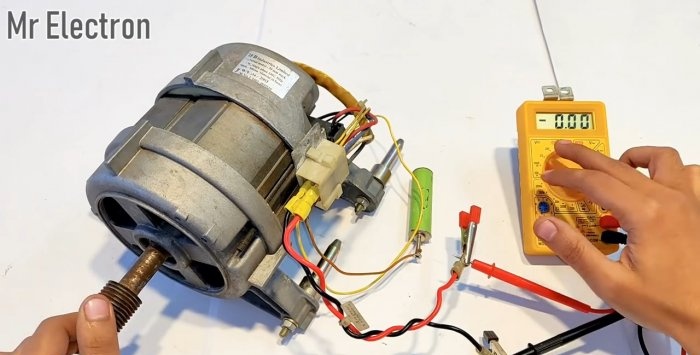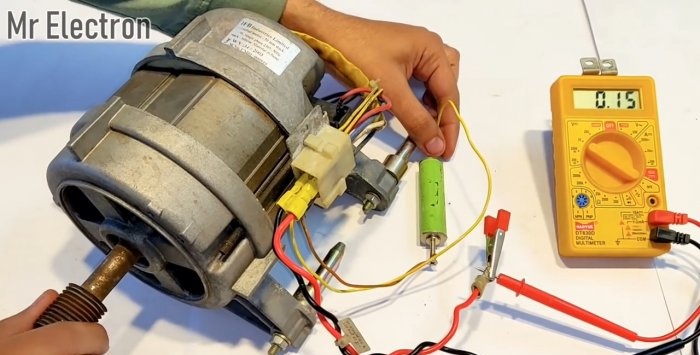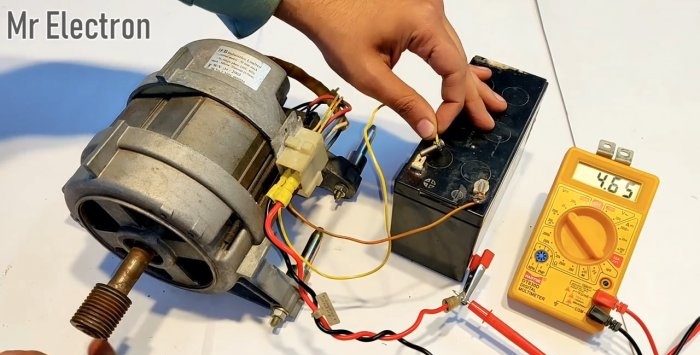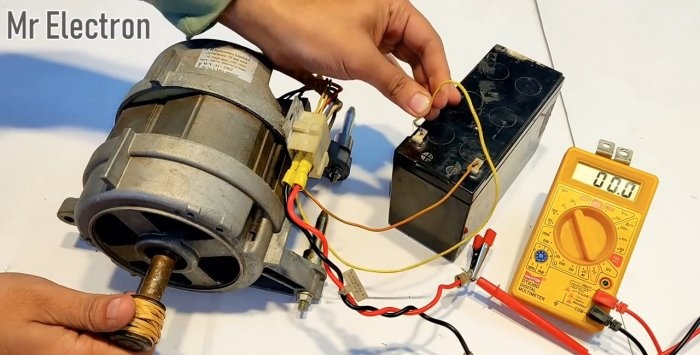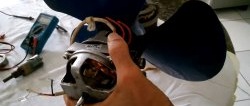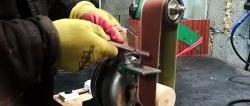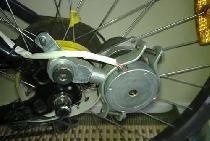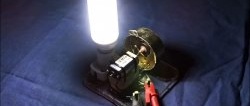
An electric motor from a washing machine is very easy to find due to the fact that it rarely fails compared to other components, and the machines themselves are often thrown into landfills. This is a very valuable thing for DIYers; I consider how many simple machines can be built on its basis.
This motor can also work as a generator. But unfortunately, it will not generate energy just like that, since it does not have permanent magnets capable of creating an EMF in its windings.
How to start the engine from a washing machine as a 220 V generator
The motor from the washing machine has the classic structure of a commutator electric motor. And it can operate on both direct and alternating current. It's all about managing it.
Typically, the motor from the washing machine has 6 pins on the connection block: the first pair on top are the tachometer sensor pins, to control the rotation speed - we won’t need them. The second two in the middle are the stator winding terminals. The third lowest pair is the rotor output.
To make the motor produce current, you need to apply some voltage to the rotor.This will create a magnetic field on it, which in turn, when it rotates, will create an EMF on the stator winding.
We connect the wires to the rotor, to which the power source will be connected in the future.
We connect the wires to the stator. To the ends of the wires - multimeter to measure the output voltage.
To demonstrate, let’s spin the motor shaft without a source connected to the rotor.
Eventually multimeter showed zero volts and this is understandable.
We connect the power source. It will be played by a 3.7 V lithium-ion battery. Again, turn the shaft by hand.
Multimeter gave a certain value, which means energy is being generated.
We change the 3.7 V battery to a 12 V battery. Rotate it by hand.
Result: voltage increases.
To create a greater torque corresponding to the operating speed of the engine, we wind a winch around the pulley.
Let's pull, creating rotation.
Though multimeter shows 75 V, but in reality the voltage is higher, since the electronic device has a delay and is not able to count instantaneous surges of electricity.
For clarity, let’s connect a 220 V incandescent lamp. We’ll also wind the winch and pull it.

The light will flash for a short time.
Conclusion
The motor from the washing machine is quite suitable as a voltage generator, but it is difficult to “attach” it somewhere, since it: produces direct current, requires high speeds, requires additional power to operate, and if it stops, this power must be turned off somehow.
But there are also advantages: the output current can be easily controlled by adjusting the rotor circuit current, there is no magnetic sticking, and it is small in size compared to permanent magnet generators.
